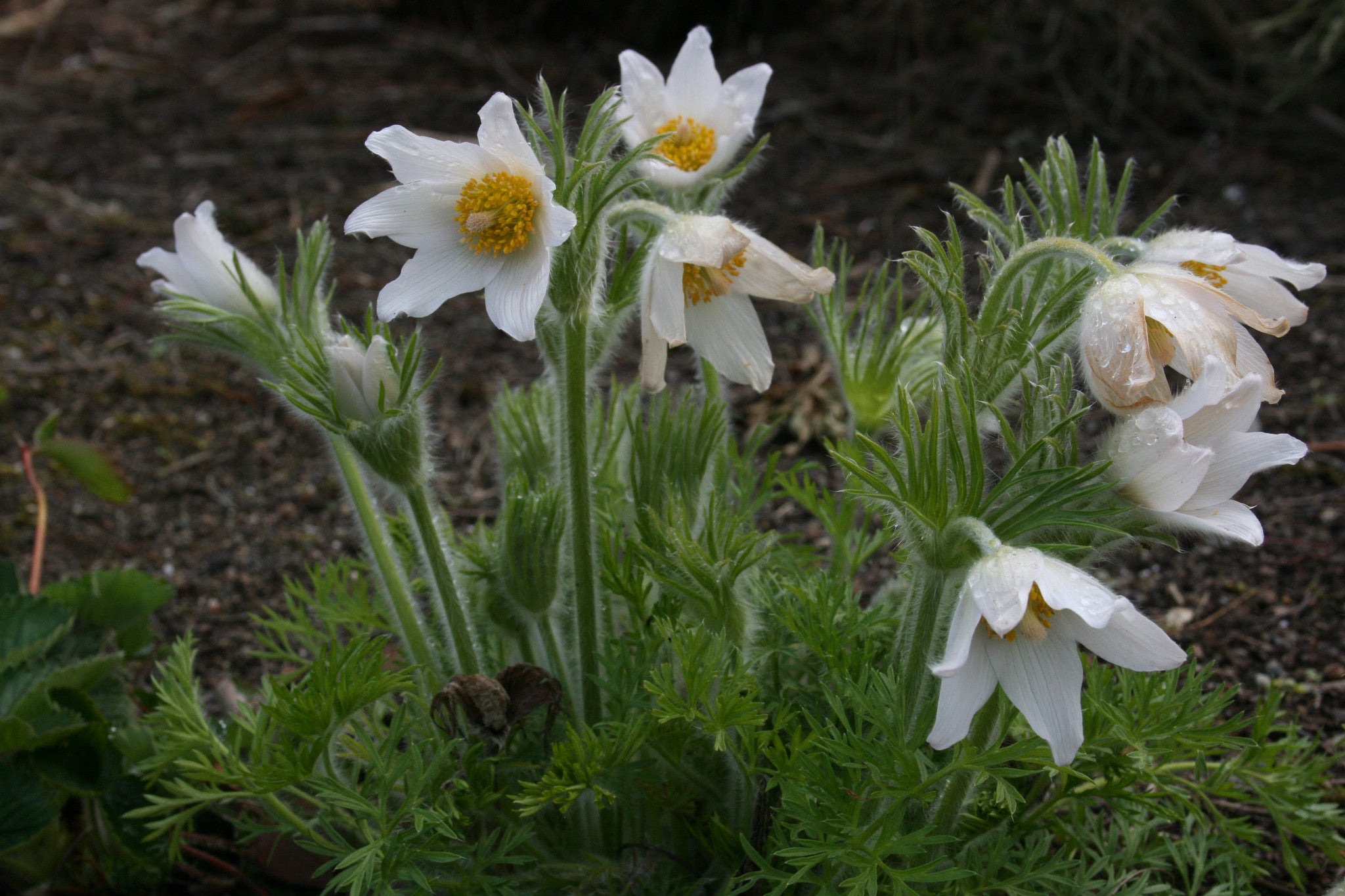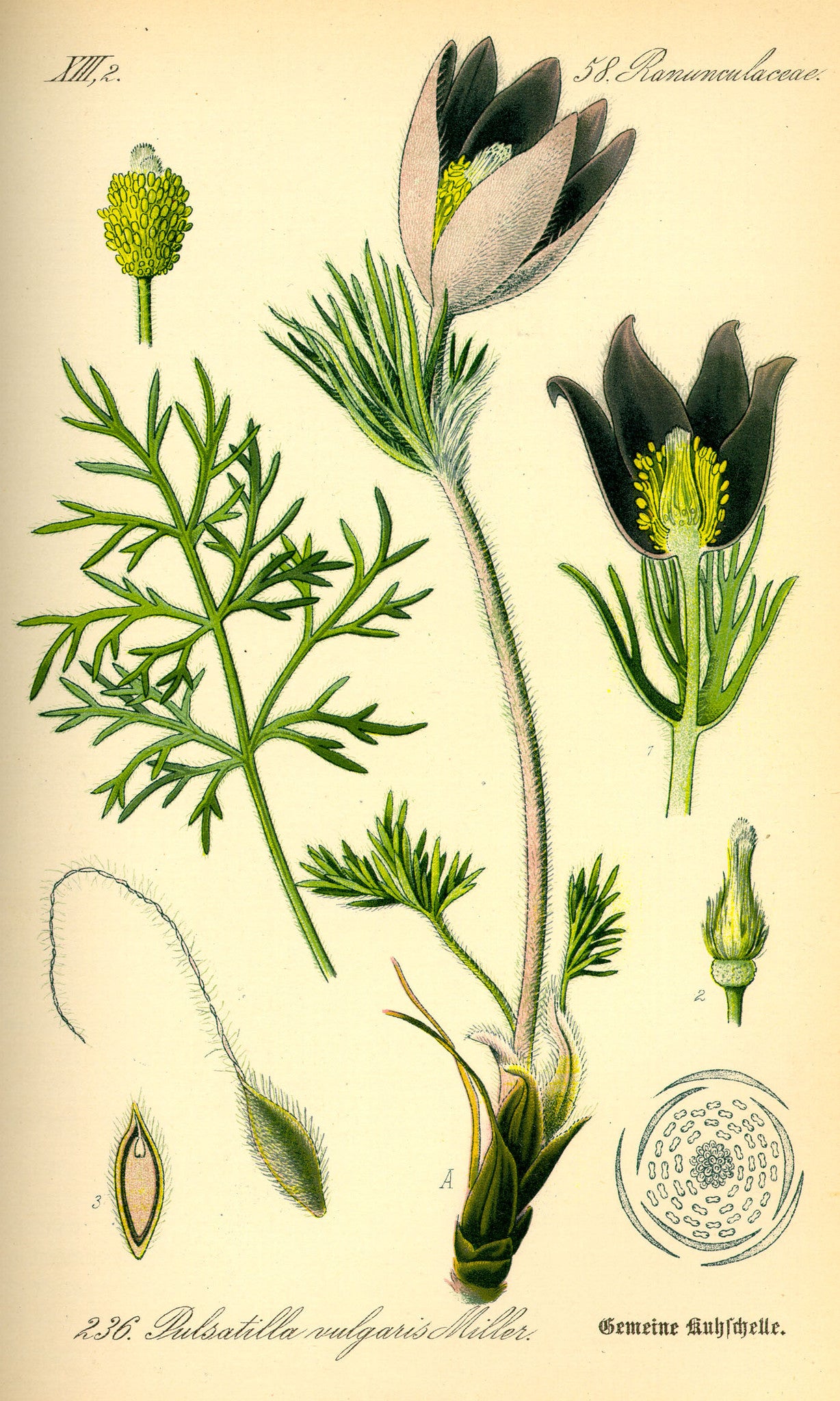Pulsatilla vulgaris 'Alba'
Approx. 0.5 litre pot
About this cultivar:
Pulsatilla vulgaris 'Alba' is the white form of the normally purple species of flowering plant found locally on calcareous grassland in Europe. It used to be considered part of the Anemone genus, to which it is closely related, and is synonymous with Anemone pulsatilla.
- Position: Full sun, Partial shade
- Soil: Almost any soil, grows well in Ballyrobert
- Flowers: March, April, May
- Other features: -
- Hardiness: Fully hardy, grows well in Ballyrobert
- Habit: Clump forming
- Foliage: Semi Evergreen
- Height: 15 - 45 cm (0.5 - 1.5 ft)
- Spread: 15 - 45 cm (0.5 - 1.5 ft)
- Time to full growth: 2 to 5 years
- Plant type: Herbaceous Perennial
- Colour: Green, white
- Goes well with: --
About this genus:
Pulsatilla is a genus that contains about 33 species of herbaceous perennials native to meadows and prairies of North America, Europe, and Asia. The genus name comes from the Latin meaning that it sways in the wind. Common names include pasque flower (or pasqueflower), wind flower, prairie crocus, Easter Flower, and meadow anemone. Several species are valued ornamentals because of their finely-dissected leaves, solitary bell-shaped flowers, and plumed seed heads. Interestingly enough the showy part of the flower consists of sepals, not petals.
The genus Pulsatilla is sometimes considered a subgenus under the genus Anemone or as an informally named group within Anemone subgenus Anemone section Pulsatilloides.
The flower blooms early in spring, which leads to the common name Pasque flower, since Pasque refers to Easter in French. The flower is 'cloaked in myth'; one legend has it that Pasque flowers sprang up in places that had been soaked by the blood of Romans or Danes because they often appear on old barrows and boundary banks. In Greek mythology, pasque flower sprung from the ground wet with Aphrodite’s tears as she wept over the wounded Adonis, while homeopaths prescribe the plant for sensitive people who are easily moved to tears
As a genus Pulsatilla is quite the diplomat! - Pulsatilla patens is the provincial flower of Manitoba, Canada and Pulsatilla hirsutissima is the state flower of South Dakota, United States. Closer to home, Pulsatilla vulgaris is the County flower for both Hertfordshire and Cambridgeshire in England.Pulsatilla vernalis is the county flower of Oppland, Norway. Quite soon it may have a seat at NATO....
Where and how does it grow? As its diplomatic background suggests - it sits in the middle : it will grow, and look suitable, almost anywhere that isn't too extreme. Simple as that.
One last thing: Pulsatilla is highly toxic, and produces cardiogenic toxins and oxytoxins which slow the heart in humans. Don't eat it!




